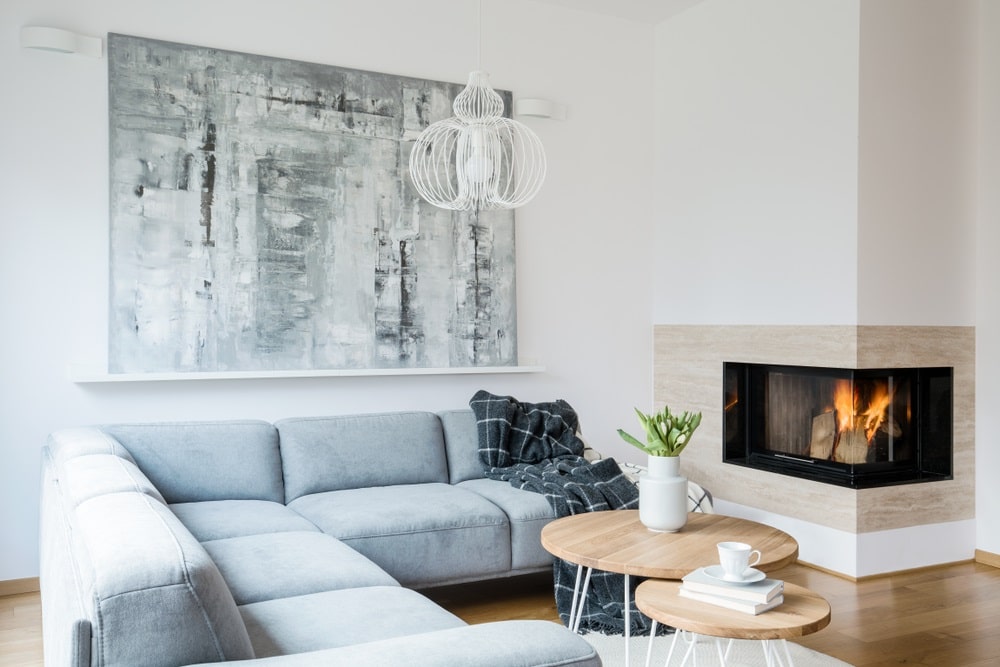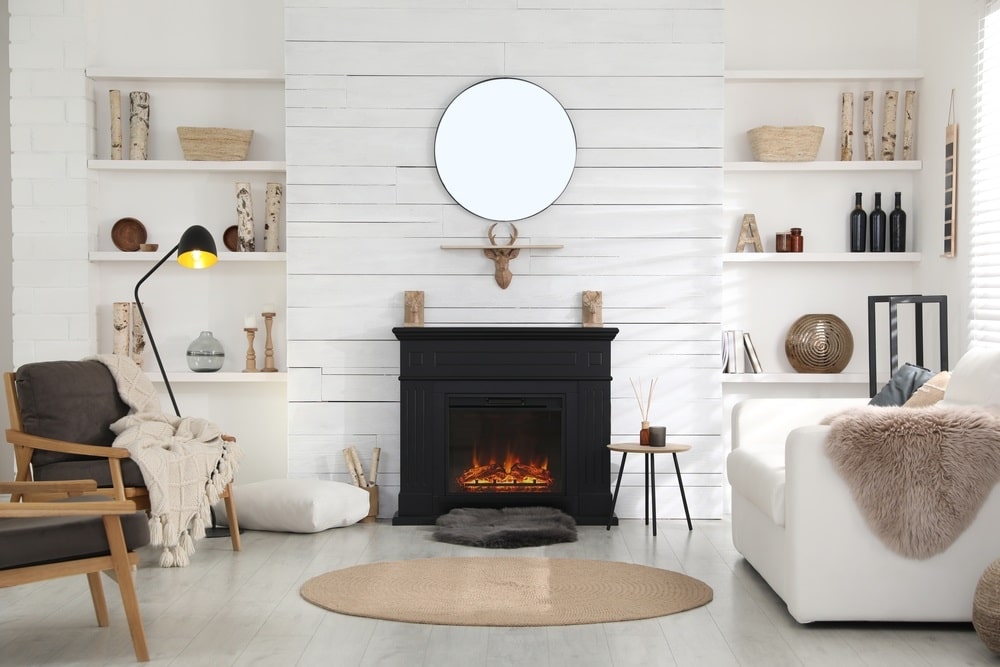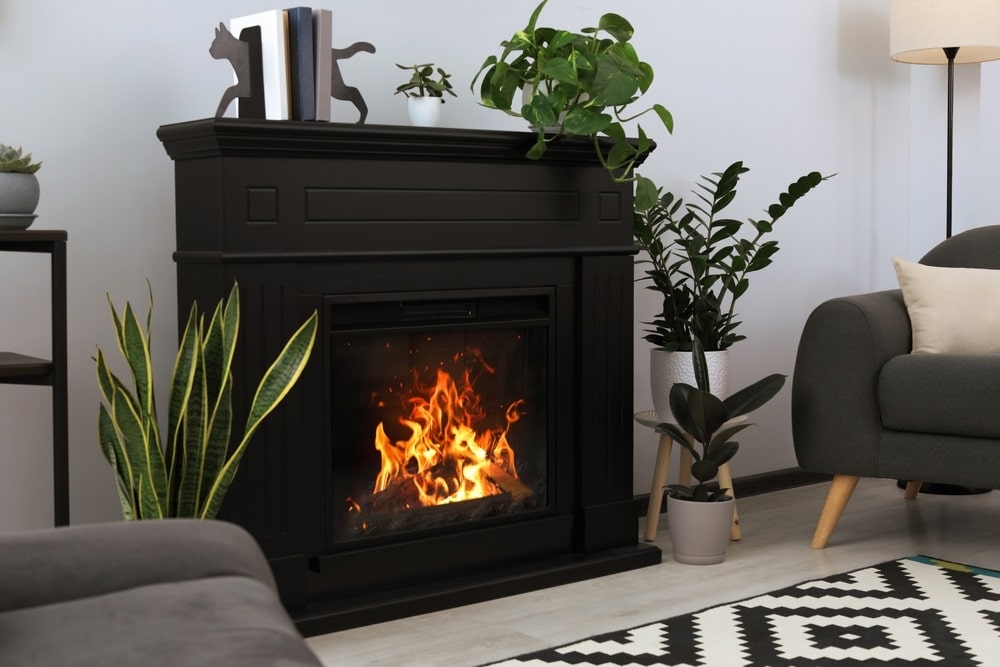As the weather starts to cool and the leaves turn, many homeowners begin thinking about cozy evenings by the fireplace. Gas fireplaces are becoming increasingly popular because they combine warmth, convenience, and energy efficiency. But if you’re considering upgrading or installing a gas fireplace, you might be wondering: should you choose a gas fireplace insert or a full gas fireplace installation? Both options have unique benefits, and understanding the differences can help you make the best choice for your home.
In this post, we’ll break down the features, benefits, and considerations for each option so you can decide which one best fits your space, style, and lifestyle.
Understanding the Basics: Inserts vs. Full Installations
Before diving into the differences, it’s important to understand what each option entails.
Gas Fireplace Inserts
A gas fireplace insert is a unit designed to fit inside an existing wood-burning fireplace. Inserts are engineered to improve heating efficiency and modernize an older fireplace without requiring major remodeling. Typically, a gas insert includes the firebox, a glass front, a venting system, and gas connections.
These units are particularly well-suited for homes with masonry or prefab fireplaces that may not be fully efficient or safe to use with traditional wood-burning methods. An insert can transform your existing fireplace into a clean, low-maintenance heating source that’s ready for fall and winter use.
Full Gas Fireplace Installations
A full gas fireplace installation, on the other hand, involves a complete installation of a new gas fireplace unit. Unlike inserts, full installations are not dependent on an existing fireplace and can be placed anywhere in your home, offering more flexibility in design and placement.
These installations include the firebox, gas lines, venting systems, and often a custom mantel or surround. Full installations are ideal for new construction projects or major remodels where homeowners want a modern, visually striking centerpiece that provides both heat and ambiance.
Key Differences Between Inserts and Full Installations
When deciding between a gas fireplace insert and a full installation, there are several critical factors to consider.
Installation Requirements
Inserts typically use the structure of your existing fireplace, meaning the installation is less invasive. Most homeowners can have an insert installed with minimal modifications, which translates to shorter project timelines and less disruption to your living space.
Full gas fireplace installations, in contrast, require more construction. This may include framing a new area, running gas lines, installing a venting system, and potentially modifying walls or flooring. Because of this, full installations often involve a longer timeline and higher installation costs.
Heating Efficiency
Gas fireplace inserts are designed to improve the efficiency of an existing fireplace. Traditional wood-burning fireplaces can lose a significant amount of heat through the chimney, but inserts trap more warmth and distribute it into your living space. Many inserts offer energy-efficient models with precise flame control and heat output settings.
Full gas installations are often engineered to maximize heating performance. These units generally provide higher BTU output and can heat larger spaces more effectively, making them ideal for open-concept living areas or homes that require a supplemental heat source.
Aesthetics and Design Options
When it comes to style and design, inserts maintain the look of your existing fireplace surround. This can be beneficial for historic homes or spaces where you want to preserve the original character. However, inserts do have size limitations, and your design options may be constrained by the dimensions of the existing fireplace.
Full installations offer unmatched flexibility in design. You can choose from a variety of finishes, firebox sizes, and mantel styles. Because you are not limited by an existing fireplace, these installations can serve as dramatic focal points in your home, complementing both modern and traditional interiors.
Cost Considerations
Cost is always a key factor. Gas inserts typically have a lower material cost than full installations, and because they rely on the existing fireplace structure, installation costs can also be more moderate.
Full gas fireplace installations, however, tend to be more expensive due to custom design work, construction requirements, and additional materials. While the upfront investment is higher, full installations can provide significant long-term value in terms of efficiency, aesthetics, and home comfort.

Factors to Consider When Choosing
Every home and homeowner has unique needs. Here are some important considerations when deciding which option is right for you.
Existing Fireplace
If your home already has a wood-burning fireplace in good condition, a gas insert can be a smart way to modernize your space. For homes without an existing fireplace, a full installation is the only option.
Home Layout and Space
A full installation provides flexibility in placement. You can position the fireplace anywhere that suits your floor plan and design vision. Inserts, however, are constrained to the location of your existing fireplace, which may influence room layout decisions.
Desired Heating Capacity
Consider your heating needs. Inserts are ideal for enhancing the efficiency of a specific room, while full installations can heat larger areas and may be better suited for homes that rely on the fireplace as a primary or supplemental heat source.
Lifestyle and Usage
Think about how often you’ll use your fireplace. Gas inserts offer low-maintenance convenience for homeowners who want the ambiance of a fire without the hassle of wood. Full installations are often chosen by those who value both aesthetics and high-performance heating.
Future Remodeling Plans
If you’re planning a major renovation or building a new home, a full gas fireplace installation can integrate seamlessly with your new design. Inserts are better suited for upgrades in existing homes without structural changes.
Pros and Cons: A Clear Comparison
To summarize the main differences, here’s a quick comparison of pros and cons:
| Option | Pros | Cons |
|---|---|---|
| Gas Fireplace Insert | Lower cost, quicker installation, improves efficiency of existing fireplace | Limited design options, dependent on existing fireplace |
| Full Gas Fireplace Installation | Highly customizable, higher heat output, can be installed anywhere | Higher cost, longer installation time, may require remodeling |
In general, inserts are a great choice for homeowners looking for a practical upgrade, while full installations are ideal for those seeking design flexibility and maximum performance.
Maintenance and Safety Considerations
Both gas inserts and full installations require proper maintenance to ensure safety and longevity. Regular professional inspections and cleanings are essential.
Some maintenance considerations include:
-
- Venting inspections: Proper venting is critical to prevent dangerous gas buildup.
- Gas line checks: Ensuring connections are secure and leak-free.
- Efficiency monitoring: Checking flame patterns and heat output to maintain optimal performance.
For both options, annual maintenance by a certified chimney and fireplace professional, like those at Full Service Chimney, helps prevent issues before they become costly problems.

Making the Best Choice for Your Home
Choosing between a gas fireplace insert and a full gas fireplace installation ultimately comes down to your home’s structure, your design goals, and your heating needs.
-
- If you already have a wood-burning fireplace and want to modernize efficiently, a gas insert is an excellent choice.
- If you’re designing a new space or want a custom focal point with high heating capacity, a full installation is likely the best option.
No matter which path you choose, a professional assessment is crucial. Certified technicians can evaluate your home, recommend the right unit, and ensure safe, efficient installation.
Enjoy Comfort and Style All Year Long
Gas fireplaces offer the perfect combination of warmth, style, and convenience. Whether you choose a gas fireplace insert to upgrade your existing fireplace or a full gas fireplace installation to create a striking centerpiece, the right choice can transform your home and enhance your comfort for years to come.
Planning ahead—especially during the fall—ensures your fireplace is ready to keep your home warm and inviting as the colder months arrive. Reach out to a certified chimney and fireplace professional to discuss your options, explore designs, and find the solution that perfectly fits your home.
With the right installation, your fireplace won’t just provide heat—it will become a central part of your home’s ambiance, adding charm, efficiency, and enjoyment for your family and guests.
If you’re unsure about the condition of your chimney or want expert advice on the best path forward, don’t hesitate to contact a trusted chimney professional today. Your home—and your family’s safety—depend on it.

